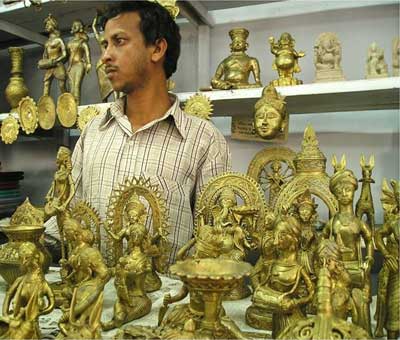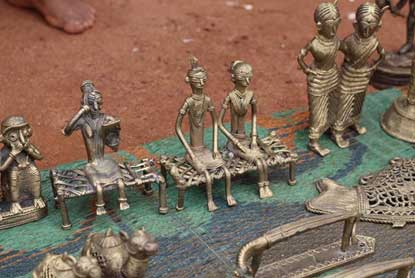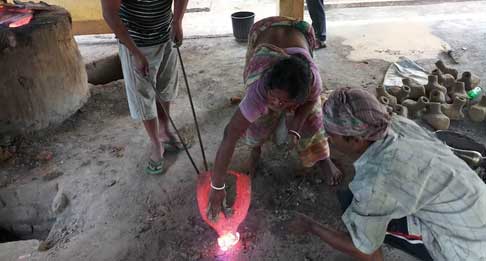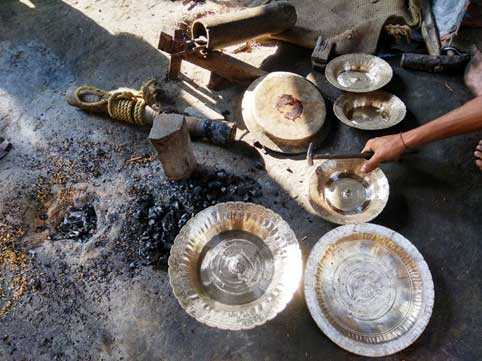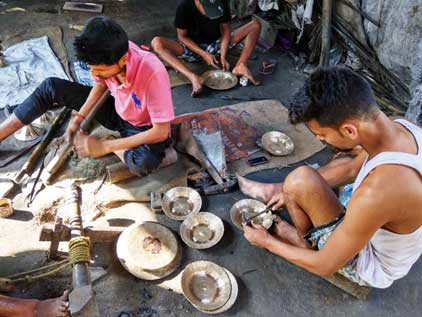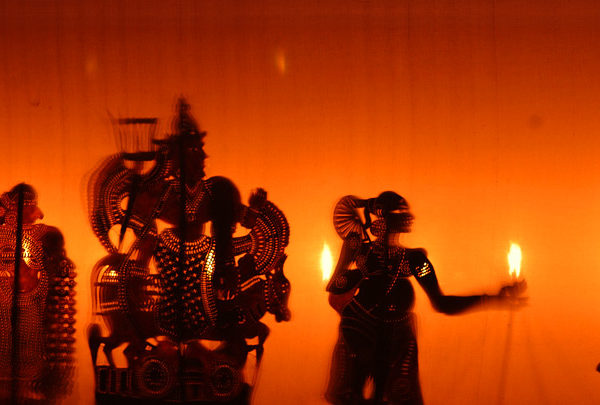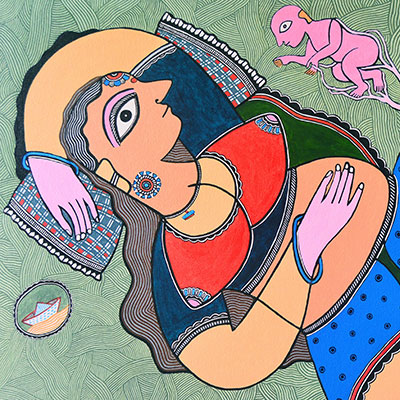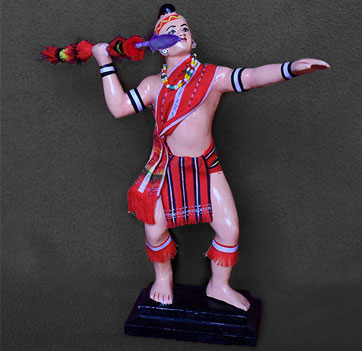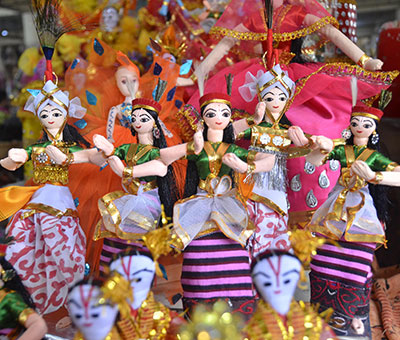The Metal Age or the last prehistoric phase is the kernel of the beginning of what we recognize as Metalworks today. When thinking of craft in India, Bengal is an ‘elephant in the room’ by the virtue of its popularity and unwavering skills that only get better with time. Whether it be vessels, utensils, ceremonial and ritualistic or decorative objects, architectural ornamentation, personal ornaments, sculptures, weapons, and so on, West Bengal is noted for the intelligence and wealth of its handicrafts. Metalcraft of the state is appreciated for the dexterous creations from metals like copper, brass, silver, gold, and some alloys. The art of making metal craft has circulated forward to the present artisans from the past craftsmen who were experts at creating authentic items since the prehistoric ages. The breadth of the tradition of metal crafts of West Bengal ranges from utilitarian items to traditional jewelry. This article will articulate the two exquisite and essential Metal crafts and their makers, in West Bengal, India.
Makers of Dhokra Craft
The Dhokras in lost wax
The most arresting fact about Dhokra Craft is how, as a consequence of the oldest metal casting technique called ‘lost wax’, it does not follow the six principles of Shilpa shastra where the anatomy of a figure has a standard measurement. The artifacts are often inordinate and hence astonishing.
The ‘lost wax’ process is used to cast hollow brass objects and images. The object of the wax is modeled in detail around a hardened clay core, which has approximately the same shape of the object to be cast. Layers of soft, refractory material are laid over the wax model and hardened into a mold. The wax between the core and the inner surface of the mold is lost or burnt out as the mold is heated and the molten metal takes its place and hardens between the core and the inner surface of the mold which holds a negative impression of the wax model in all its detail. The outer surface of the hardened metal reproduces the shape and details of the original wax model with the core producing the hollow interior. The hardcore and the mold become soft and spongy on firing and are easily removed.
Dhokra craft is a living tradition of metalwork in Eastern India. This form of craft is named after the Dhokra Kamar tribe. The metalworkers of West Bengal, known as the Dhokras and the dheppons inhabit the districts of Bankura, Midnapore, Purulia, Birbhum, and Burdwan. Their metalware has a strong and primitive folk style. Dhokra craft includes payeri or mol (anklets), hansuli (necklace), earrings and bangles, buli (piggybank), measuring bowls, or paikona of different sizes, a ceremonial finial pot kalas, which is mounted on a wooden pole for festivals. In addition to these items, the artisans create various ritualistic objects of immense religious importance like images of gods and goddesses, birds, and animals, like Lakshmi, Lakshmi-Narayan, Pancha Pradeep, Siva-Parvati flanked by Ganesh and Kartik, elephants, horses, owls, peacocks, etc.
Makers of bell-metal craft
The kangsakars
Artisans of Bankura, Bishnupur, Ghatal, and Chandanpur in Midnapore, engage in engraved brass and bell metalwork. The traditional metal workers of West Bengal who work with copper and its alloys are known as kangsakars or kansaris. The kangsakars, bell-metal artisans make articles from Kansa alloy, which are seven parts of copper and one part of a tin, and the shapes are made by beating and hammering.
Ritual ware is made from copper sheets, eating utensils are made of Kansa, and utensils for cooking are cast in brass or shaped in sheet brass, copper, or iron. The seven to one alloy used in Bengal does not tarnish and is resistant to mild acids, but it is not malleable enough for easy working. kangsakar artisans work in groups of five and plates, bowls or tumblers are forged from lumps of Kansa on anvils and steel shapers in a cycle of heating and hammering. The lumps of metal take the desired shapes and are finished on indigenous, hand-operated lathes. Die-cast utensils use three molds, one for the core and two for the outer shape. Sheet metal utensils are made by beating the sheets to the required shape on anvils and shapers. Elaborate shapes are made by dovetailing the parts and welding them together by heating and hammering.
The present privatization has had a massive impact on the artisans and the traditional metal craft industries. It is the need of the hour to take adequate steps towards conservation and prevention of the industry and its workers to develop and preserve the heritage and culture of West Bengal.
Text By Rageshree Ranade
Image Courtesy: Arnab Chatterjee, Jitu Mishra, Mahaprasad Nanda, Abhijna e-Museum website
Find out more about the Craft:
https://asiainch.org/craft/metalware-of-west-bengal/
https://www.indianetzone.com/41/metal_craft_west_bengal.htm

